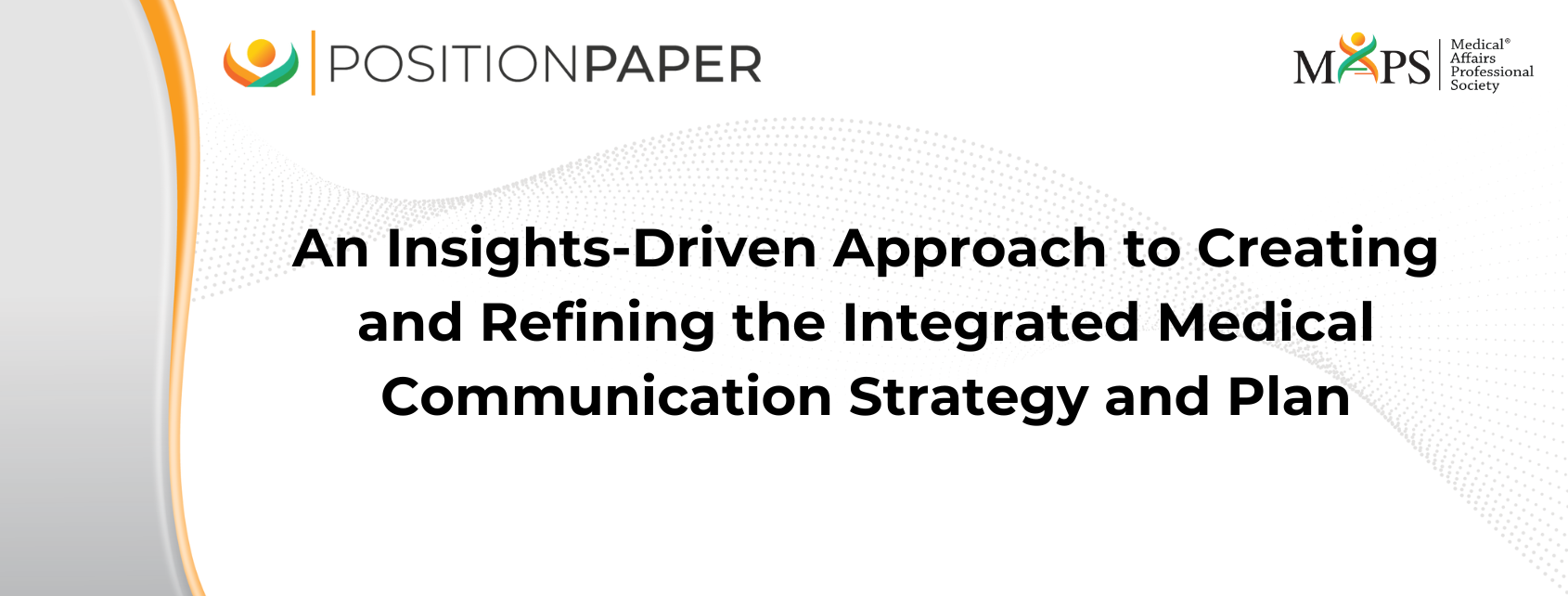Authors

Monicca Shanthanelson, PhD, CMPP

Scott Houck, PhD, CMPP

Sissy Easo-Joseph, PhD, MS

Robin Winter-Sperry, MD

Nancy Ortiz, PharmD

Robert Groebel

Milana Zivkov, MD, MSc

April Adams, PharmD

Renu Juneja, PhD
This publication represents the consensus opinion of members of the MAPS Field Medical, Medical Communications and Insights Focus Area Working Groups (FAWGs) but does not represent formal endorsement by the authors’ organizations.
INTRODUCTION
The Medical Communications function sets the strategic vision for scientific communications, and creates, communicates, and updates content for publications, disease state education, congress medical activities, Field Medical engagement, Training, and Medical Education.
Medical Communications, in collaboration with other stakeholders within Medical Affairs and other cross-functional partners such as Commercial, R&D, and Market Access, creates the Integrated Medical Communications (iMC) Strategy. The iMC Strategy sets the course for scientific communication activities for a product or disease state. The iMC Strategy should align with the overall brand strategic vision and medical objectives and is informed by the scientific narrative agreed upon within the scientific communication platform. The iMC Strategy informs various plans developed by several teams within Medical Affairs, such as Therapeutic Area Medical Leads, Medical Communications and Publications, Medical Education, and Medical Information. Together, the plans of the individual teams form the iMC Plan (Figure 1).
The iMC Plan is developed with an understanding of the treatment landscape, audience educational needs, product attributes, and scientific evidence. At the heart of the iMC Plan lies the publication plan, which is built on the context of data milestones and educational gaps. The publication plan informs all downstream plans which rely on publications for scientific evidence and support.
In this white paper we will discuss various insights that should inform the creation and refinement of the iMC Strategy and Plan (iMC S/P), in addition to the traditional inputs that Medical Communications teams commonly use. The objectives are to (1) explain value of an insights-driven collaborative approach to creating an iMC S/P, (2) elucidate best practices for collecting and synthesizing integrated insights that are relevant to Medical Communications, and (3) operationalizing an insights-driven approach to create and update an iMC S/P.
The value of an integrated approach in building a communication strategy and plan is that the communication plan will consider all communications activities in totality and identify the best possible way to execute on specific communication objectives, leveraging content and activities of multiple teams. Integration allows for movement away from an isolated approach and toward a holistic, informed, and inclusive approach, offering the right content, at the right time, to the right audience, through the right initiatives, and through the right channels. This integrated approach of planning and delivering content is the first step to achieving an audience-centric engagement and moves the needle toward a seamless and consistent content and engagement experience. Through appropriate integration of all functional plans and channels for communication, the iMC plan will enable a holistic engagement experience for external stakeholders while addressing the strategic goals of the organization. The process for building an iMC S/P has been described in greater detail in a previous white paper.1



